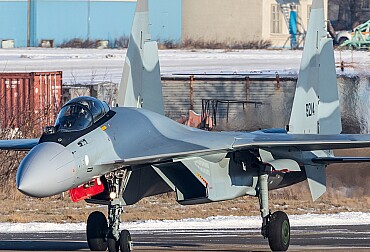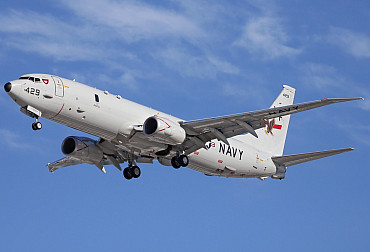The US 6th generation fighter aircraft project replaced by a light fighter concept?
Launched by the U.S. Air Force in 2015 to replace the 5th generation F-22A Raptor air superiority aircraft, the NGAD (Next Generation Air Dominance) project aims to develop a 6th generation aircraft (the PCA, for Penetrating Counter Air), combined with 'loyal wingman' drones called CCA (Collaborative Combat Aircraft) and connected effectors. However, while a demonstrator flew for the first time in 2020, the NGAD has recently been put on hold, as Frank Kendall, Secretary of the U.S. Air Force, pointed out last July.
The cost of the project, which could be three times higher than that of the F-35, is one of the reasons behind this decision, especially as other priorities need to be funded, such as the B-21 Raider strategic bomber and the development of the Sentinel intercontinental ballistic missile. Additionally, it is necessary to ensure that the NGAD will be aligned with current and future threats. "If you look at what we do in our five-year plan – that is on the Hill now – to our foundational accounts in the out years, it’s clear we did something there that’s not going to be, you know, sustainable. We’ve got to fix that problem too. So we’ve got a number of affordability issues over the five-year plan that we had to address. And we also have to go to look at and verify, if you will, that we had the right concept," said Frank Kendall, Secretary of the U.S. Air Force, on the sidelines of the Farnborough Airshow on July 20.
Despite Mr. Kendall's assurances that the U.S. still intends to produce a sixth-generation manned aircraft, will the NGAD see the light of day? In June, the Chief of Staff of the U.S. Air Force, General David W. Allvin, did not show unwavering support, saying that the project was just one of many choices that would have to be made in the years ahead with tight budgets. He did not describe the NGAD as an indispensable element, stressed Air & Space Forces Magazine: "Think systems over platforms. That’s the environment we’re adapting to. So a systems-first approach, against which platforms that do things can maybe come and go. So that way, maybe those platforms can solve for agility and pop that one out, put another one in, and you’ve better enabled."
The U.S. Air Force is working on a different concept, as noted by The Aviationist, reporting on the latest edition of the World Air and Space Chiefs of Staff Conference, organised by the Air and Space Power Association and the proceedings of which have just been published by the Royal Aeronautical Society. During his speech, General Allvin did not explicitly mention NGAD. However, he did say that it was better to develop systems to adapt rather than to last. Otherwise, an air force would run the risk of becoming dependent on platforms based on thinking rendered obsolete by the evolution of technologies and threats.
To illustrate his point, the head of the U.S. Air Force unveiled an image of a light combat aircraft concept, with lines almost similar to those of the F-35A. As The Aviationist points out, this is "Most likely, it is plainly an unofficial visualization of a mass producible fighter with stealth capabilities, merely derived from the F-35, that Allvin or the U.S.A.F leadership broadly has in mind." General Allvin wants possibly to return to the approach of the 1950s, which led to the development of the Century Series Fighters. At the time, the aim was to develop a new fighter aircraft that would remain in service for a relatively short period – five, six, or even seven years. This approach meant that technological innovations could be incorporated more quickly and so we had more effective aircraft to deal with the threats of the day.
Video: Keynote with General David W. Allvin, Chief of Staff of the Air Force, at GASCC 2024 / YouTube
Today, such an approach can be encouraged by digital engineering, open systems architecture and the use of new manufacturing processes such as 3D printing, for example. General Allvin emphasised the idea of a systems-centric force rather than a platform-centric force. In any case, this is not the first time that the U.S. Air Force has raised the concept of a new light fighter. In 2021, General Charles Q. Brown, then Chief of Staff, said he wanted to replace the F-16s with 4.5-generation fighters, i.e. with capabilities between those of the F-16 and the F-35. "I want to be able to build something new and different that is not the F-16 but has some of its capabilities", he explained.
In the meantime, although its withdrawal was scheduled for 2030, the F-22A Raptor is likely to remain in service well beyond that date. And with good reason: it is currently undergoing a modernisation programme to equip it with ‘a number of classified sensor systems’, including a new infrared search and tracking system (IRST) designed to enable it to detect stealth aircraft. "The F-22 team is working really hard on executing a modernization roadmap to field advanced sensors, connectivity, weapons, and other capabilities (...) The Raptor team recently conducted six flight test efforts to demo advanced sensors. We’re executing that successfully, and that will lead to a rapid fielding in the near future," said General Jason D. Voorheis, the U.S. Air Force's executive director for advanced fighter programmes, at a conference in Dayton, Ohio, in July.








